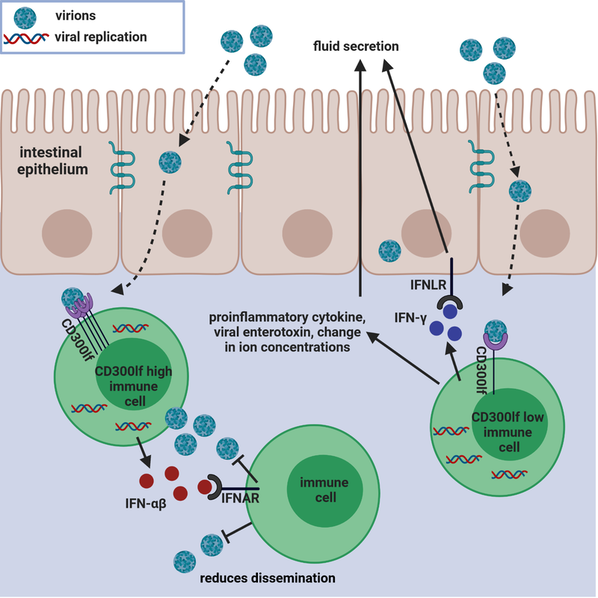Elucidation of norovirus disease mechanisms
|
Noroviruses are a major cause of acute gastroenteritis and the leading cause of severe childhood diarrhea globally yet we know very little about underlying disease mechanisms due to limitations in model systems. Our lab has recently demonstrated that murine norovirus (MNV) infection of neonatal mice causes acute self-resolving diarrhea that mirrors human norovirus pathogenesis. The virulence of MNV in this model positively correlates with infection of immune cells in the intestine and extraintestinally. Moreover, the propensity of the MNV virion to undergo contraction in response to environmental triggers encountered in the intestinal lumen (e.g., bile salts, low pH, metal ions) positively correlates with virulence, thus directly linking environmentally-influenced biophysical features with disease potential.
Major research questions being addressed in the lab include understanding how infection of immune cells causes diarrhea; delineating norovirus interactions with the gut epithelium; and determining whether infection of tissues distal to the intestine contributes to intestinal disease. We are also studying the host response to infection. |

